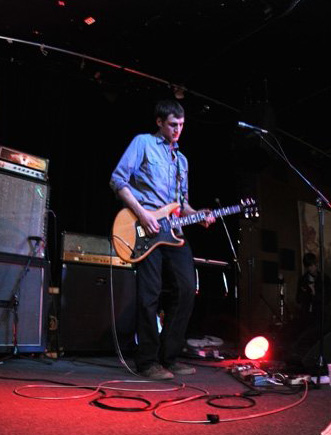 I had a chance to speak with the guitarist/vocalist in one of my favorite bands, Arma Secreta (for those of you that aren’t certain on the pronunciation of Secreta – It rhymes with Beretta). Chris Wark is the singer and sole guitarist in the 3 piece band out of Memphis, TN. I remember catching a live performance on YouTube, and that clip sold me right away. Chris plays Travis Bean guitars (I love aluminum neck instruments) and he utilizes live guitar loops to create the signature Arma Secreta sound. Their sound is all about tension, intensity, melody and energy. The definitely have elements of math-rock, which I’m a big fan of, but I only like “math rock” if it maintains melody and emotion.
I had a chance to speak with the guitarist/vocalist in one of my favorite bands, Arma Secreta (for those of you that aren’t certain on the pronunciation of Secreta – It rhymes with Beretta). Chris Wark is the singer and sole guitarist in the 3 piece band out of Memphis, TN. I remember catching a live performance on YouTube, and that clip sold me right away. Chris plays Travis Bean guitars (I love aluminum neck instruments) and he utilizes live guitar loops to create the signature Arma Secreta sound. Their sound is all about tension, intensity, melody and energy. The definitely have elements of math-rock, which I’m a big fan of, but I only like “math rock” if it maintains melody and emotion.
You can learn more about Arma Secreta from the following links : Arma Secreta BandCamp | Arma Secreta Facebook | Arma Secreta YouTube
Chris Wark is also a cancer survivor. He was diagnosed with Stage 3 Colon Cancer in 2003 (26 years old) and radically changed his diet and avoided chemotherapy to overcome the cancer. He has a great blog (chrisbeatcancer.com) which talks about diet for a healthier lifestyle. But what I like about that blog… it’s not preachy or annoying. It’s very informative and realistic, from a musician’s point of view.
Recently, Arma Secreta just released a new album titled – Dependent Lividity and is a fantastic recording. The album that I was super psyched on and had many plays in the office was their last album – A Century’s Remains. Great, great album!
I mentioned that I wanted to do some interviews with musicians and have very gear-centric discussions. I started things off with John Haughm so I’m very pleased to follow that up with Chris Wark. Below is a shot of his pedal board
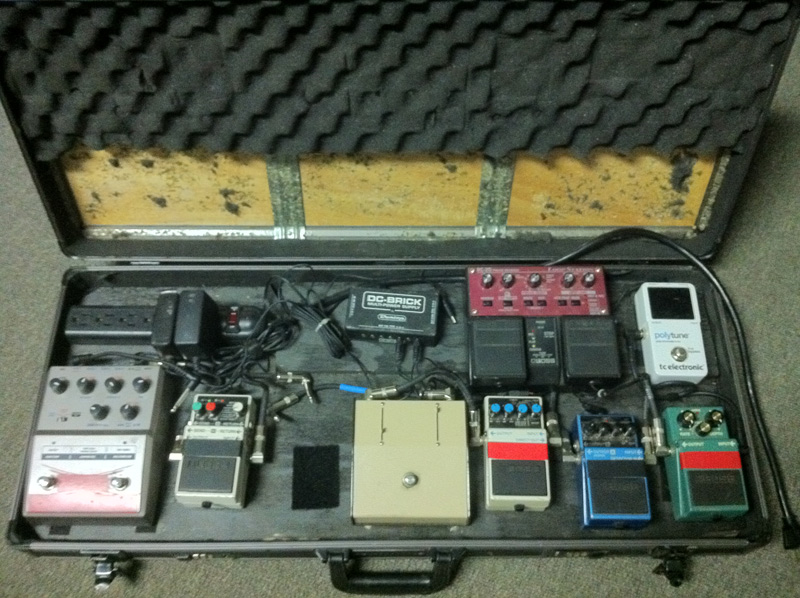 TC Electronic Polytune Tuner
TC Electronic Polytune Tuner
Boss TR-2 Tremolo
Boss PS-6 Harmonist
Boss DD-3 Digital Delay
Harmonic Percolator (Made by Chuck Collins)
Electro Harmonix Holy Grail Reverb (not pictured, older unit)
Line 6 Echo Park Delay (not pictured)
Boss LS-2 Line Selector
Akai Headrush E1
Boss RC-20 Loop Station
– How would you best describe what Arma Secreta is all about?
Clubbin, thuggin, chuggin, huggin, jugglin… but no druggin.
– What pedal is the most crucial to achieving your sound in Arma Secreta?
None of the pedals are “critical” to our sound. The sound of the band really shaped most by the guitars and amps and they way we play them. The pedals all contribute in small ways and add textures to certain musical sections, which I thinks makes for more interesting music; providing sonic variety and surprises. The Boss Harmonist is responsible for some of the weirder guitar sounds for sure. I use it to triple my signal adding an octave above and an octave below. That has become a familiar part of our sound as it makes appearances in many songs. I will say that the Akai Headrush is the most critical to the music we make, as I loop guitar parts often. Many of our songs would be impossible to play without it.
– I see you have an Akai Headrush (older version) and a Boss RC-20 loop station. Do you loop guitar signals with both loopers?
I only loop with the Headrush. It’s very user friendly in a live setting and I’ve been using it for 10+ years. So I’m pretty good at tight loops, which our drummer appreciates. The loop station is only used to trigger pre-recorded and saved samples.
– Do you split the signal to different amps with the Akai?
Nope.
– What are some of the pros and cons with the Akai Headrush?
Pros are: ease of use, it’s built like a tank, never had to replace it. I really like the sound and decay of the tape delay setting on it as well.
Cons for some would be that it only will loop 22 seconds if you plan on looping multiple layers. And it doesn’t save loops. The first time I saw/heard one in action was Ian from Don Cabellero on the “American Don” tour in the late 90’s. Had to have it.
– Are there features that the Akai has that the RC-20 does not.. and vice versa?
The RC-20 has a longer recording time and saves 10 loops, but it’s difficult to make tight loops live. I use it because I own it, but I wouldn’t really recommend it.
– Have you considered picking up the Akai Headrush E2?
Yes, mainly because it’s got a longer recording/looping time. I’ll definitely get one if mine ever dies…
– How are you liking the TC Electronic Polytune?
I love it. It’s amazing. You can play a six string chord and it tells you which strings are in or out of tune. The screen is large and bright and easy to read onstage.
– Chuck Collins Harmonic Percolator – was that a Steve Albini influence in that purchase?
Yes and like the Travis Bean guitars the scarcity of it was also an attraction.
– How would you describe the Harmonic Percolator to someone unfamiliar with that effect?
A little back story first: Chuck Collins acquired some spare parts from Interfax after they went out of business. And apparently hacked the schematics from several percolators. The original circuit boards were glued together for prevent anyone from stealing the circuit design. When I bought mine around 2001 he told me that it was one of the last ones he was going to build because he was basically out of original parts. The Harmonic Percolator is a distortion pedal. Mine has a silicon and a germanium transistor. There are two faders: volume and distortion. The input jacks are backwards, consistent with the original, and it only takes a battery, which is a pain. At a low distortion setting it produces a broad spectrum fuzz/noise as apposed to a tight buzz. When the distortion is wide open it produces an incredibly nasty, fat, compressed noise distortion. There’s a ton of low end and sounds like it’s melting on the inside and frying the guitar signal. You would think the pedal is literally smoking, which is pretty awesome. I typically use it on the lower distortion side, on about 5 out of 11, with 11 being wide open of course. Dialing it down gives individual notes more clarity, but some times I push it full blast.
– Since you and Steve Albini both use Travis Beans and Harmonic Percolators, do you think that pedal compliments Travis Beans in particular or is the Percolator great for other guitars?
Not necessarily, but I do think it sounds best with single coil pickups.
– Have you played around with other delays?
Not really no. I’ve never been on a “delay quest” to find the best delay pedal on the planet or whatever.
I use the Line 6 Echo Park mostly for short delays (3-4 repeats), which fills out certain picking parts, which I do a lot of. I’m definitely a picker. That’s the most recent addition to the arsenal. A gearhead/guitar tech buddy of mine who has literally owned every delay pedal ever made swore by it. It has a lot of delay options, tap tempo, etc. I really like it a lot.
– What do you primarily use the Boss Delay for.. long repeats? Slap backs? etc.
The DD-3 has one useful function for me: The hold function on infinite delay. It lets you control delay in the same manner you would control sustain on a piano. As long as you are pressing down on the pedal the delay is on. When you let up the delay stops. This allows me to reset the delay with each chord change. I can play a chord and hold the delay while I play another part over it. I wrote a song called Kilowatt Lake which centers around the function of that pedal. It’s on our new record Dependent Lividity.
– How are you liking the Electro-Harmonix Holy Grail?
I like the large knob as I adjust the reverb mix with my foot from one part to the next.
– Similar question to the delay, have you tried any other reverbs out there?
It does what I need it to do so I haven’t had any reason to try any others.
– Are you using the Boss LS-2 as a selector between instruments or are you splitting off effects in a loop or switching signals to the amp?
I use it to A/B my amps. It has several A/B options and a signal boost which is really nice. I use it on “Bypass / A+B” setting. When the pedal is off and bypassed you hear my Fender Bassman, when I kick it on “A+B” the Sovtek Mig-60 comes in and the Fender signal gets a boost.
– Are there any pedals that your interested in that you’re thinking about picking up?
I recently acquired an Xotic EP Booster, MXR DynaComp, and MXR Boost Line Driver from a buddy that needed cash. I’m playing around with those right now. I’m definitely interested in broadening my horizons, I know it when I hear it.
– If you could keep one effect from the board, what effect would that be? Your deserted island pedal.
Definitely the Akai Headrush. It’s great songwriting tool.
– Looking at the photo, I noticed the black and red tape on the boxes? What’s the story there?
Years ago I covered all my pedals with electrical tape so no one could tell what I was using. If someone really wanted to know they had to come up and ask me after the show and I would tell them. A girl came up to me at our record release show and told me my pedal board “sounded amazing” and that she’d seen a lot of them having dated several guitar players. That was definitely the first and probably the last time a girl will ever comment on my pedal board.
– Is that a home brew pedal board and case? What’s the story there?
Yep also made that years ago. I didn’t want to spend $250 on a large pedal board so I built one with 3/4″ plywood and black spray paint. It has two tiers which made the second row of pedals easier to get to. I bought a gun case to carry the pedal board in. Actually I bought the gun case first, then built the pedal board to fit inside it. I think it cost me around $50 bucks total and it’s held up really well.
– When you’re picking up effects, what is the most important factor when buying? Build durability, quality of tone, etc. Â
I really have never considered either of those factors. I’m more interested in what the pedal does and how I can use it. Yes some pedals color my tone but it’s negligible. I’m a practical guy and am very content with the pedals I have. Aside from adding a few here and there I really haven’t changed anything out on my board since it was originally assembled.
– I know you use a couple of Travis Beans in Arma Secreta, do you use any other guitars live or for recording?
I play the Travis Bean TB 500 the most, and on the neck pickup exclusively. Nothing sounds like it and it has shaped my playing style to such an extent that I really don’t want to play any other guitar. It has a warm hollow sound that’s also metallic and brittle, which I realize doesn’t make sense at all. And it’s incredibly responsive. I ask, and it delivers. It’s always funny when other guitar players ask me to play it. You just can’t play it like any other guitar and so they have no idea what to do with it. They will fiddle with the pickup positions and the amp eq, but they can’t get it to sound like a normal guitar and invariably put it down confused. I bought a Dan Armstrong style lucite/aluminum neck guitar built by Electrical Guitar Company in early 2011. It’s the closest to the TB500 that I’ve heard, but still very different. It’s more of a tight, hard, and focused sound, less articulate and with less individual string clarity. But I like it. I’ve been playing that live along with the TB500. I also have a TB1000 Artist, Fender Bass VI, a Telecaster, and a Peavey T-60. They don’t get much attention.
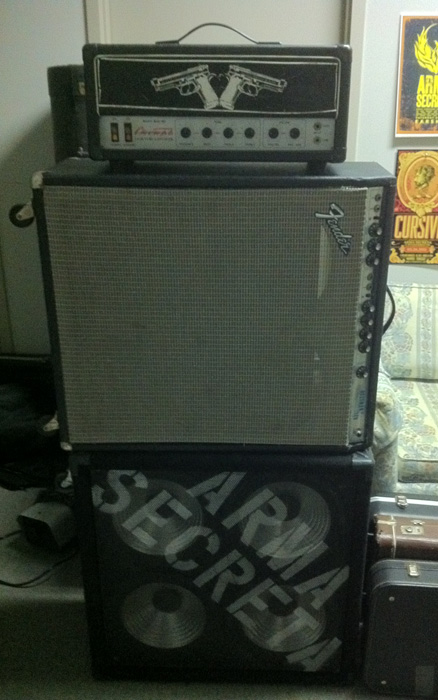 Let’s talk about the amp set up for a bit.
Let’s talk about the amp set up for a bit.
– How did you come about using the Sovtek Mig 60 head?
I played through one in a guitar shop 15 years ago and liked it. A few years after that I saw one in a pawn shop and bought it. It’s super loud , great natural distortion, and built to military specs with Russian cold war surplus parts. It’s never failed me ever.
– You mentioned your 70s Fender Bassman Ten was modded to blackface specs. Did you request the modification, or did you pick it up that way.  What does that mod give you over stock Bassman?
I read up on it and I had it modded. The blackface Fenders did not have a master volume, so that is bypassed. There were some other tweaks involved but I forget what they are now. That was years ago. I should Google it, but I’m too lazy. Definitely tonal and overdrive improvement.
– I played with a bass player that used the Hartke 4×10 cabinet and that thing weighed like a tank. How is the 4×12 guitar cab?
It’s never struck me as being particularly heavy, it’s not deep like a bass cab. That’s another item that sounds super weird. Aluminum guitar speakers sound much more metallic than aluminum bass speakers. I never play it by itself. It is always running in tandem with the Fender. The Bassman 10 has four 10″ speakers and produces a loosely distorted noisy sparkly “fender tone”. The Sovtek Mig-60 running through the Hartke 412 produces an EL34 Marshall Plexi-style distortion, it’s creamy with a tight low end and a cold metallic ring in the upper frequencies. The Fender and Sovtek together make an incredibly huge and complex tonal blend and are critical to the Arma Secreta sound. I once had a guitar player ask to borrow the Hartke cab at a show after his Marshall cab blew, and he couldn’t figure out the tone. It confused him like a TB 500 would. After much knob turning, he got so frustrated that he went found another cab to play through. Probably why they don’t make that guitar cabinet anymore. On the plus side, it’s easy to talk people out of borrowing it. Incidentally I bought the Bassman for $75, the Sovtek for $150, and the Hartke cab for $100 bucks about 10 or 11 years ago.
Thanks Chris for the great interview. Now, for those of you wanted a little taste of Arma Secreta.. here is 60 seconds with Arma Secreta, Live From Memphis:
[iframe_loader width=”425″ height=”344″ frameborder=”0″ longdesc=”” marginheight=”0″ marginwidth=”0″ name=” click_words=”” click_url=”” scrolling=”auto” src=”http://www.youtube.com/embed/ljxPIGBJ59Q”]

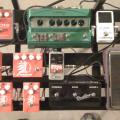
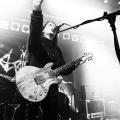
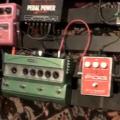
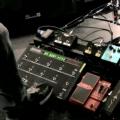
Leave a Reply